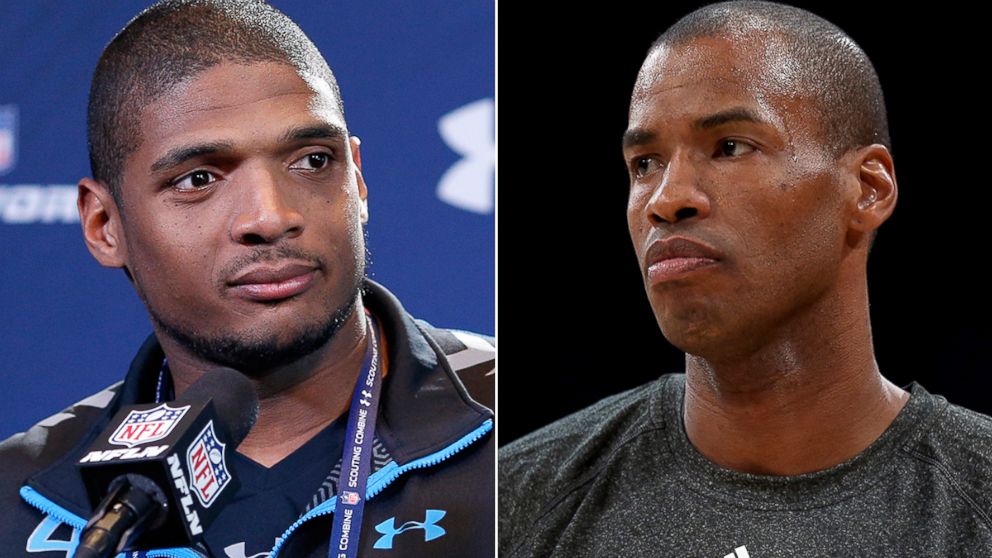I am an arm chair sports fan. Okay, let’s be honest, I pay attention to sports around three times a year. According to my own analysis of my FB feed, I posted about sports three times last year. Know how I know that? I actually documented each time: “In my second sports related post of the year…”
So after coming clean about that, I have to say I have been watching with great curiosity the fates of Jason Collins and Michael Sam.
As even someone who doesn’t follow sports likely knows, the last year has seen two male athletes come out as gay. Jason Collins, a center for the Washington Wizards, Boston Celtics and five other teams during his fourteen year career in the NBA, publicly came out after the 2013 season closed in an article in Sports Illustrated. He was a free agent at the time, and many follow up articles wondered about if the NBA and its players were really ready to have a gay teammate.
 |
| Michael Sams and Jason Collins, picture via ABC News |
Chip in $5 to support our work in 2016 and beyond >>
The record of out players in professional men’s sports is full of men of color. Five NFL players have come out after their years on the field—and four of the five players were men of color (Roy Simmons in 1992, Esera Tuaolo in 2002, Wade Davis in 2012, and Kwame Harris in 2013). Before Jason Collins, the only other basketball player who’s out was John Amaechi—also Black. In major league baseball, the only player to come out while playing was Glenn Burke, a Black outfielder who played for both the LA Dodgers and the Oakland A’s in the late 1970s.
Is the fact that we don’t talk about their race because of our discomfort with men of color? Or because of our inability to talk about race in general? Or because we have such limited ways of talking about the sexuality of Black men that aren't informed by racist and heterosexist stereotypes? Or some combination of all of it? Because frankly, given the history—and with Jason and Michael’s coming out—shouldn't the real story be about how men of color are changing the game in men’s professional sports?
Women of color in professional sports have shown the same leadership. I won’t go on my harangue about how when Britney Griner came out there was hardly a media peep. Griner is the first openly gay athlete signed by Nike, and came out before the WNBA draft in April 2013. She currently plays for the Phoenix Mercury. Let’s be clear, the assumptions that get made about women sports stars – that they are all lesbian – is a whole separate blog post. As is the completely infuriating lack of coverage of women’s sports in general.
While both the NFL and the NBA are majority people of color, (66% of players in the NFL are Black while 78% of players in the NBA are Black), I didn't necessarily assume that players of color would be the first out of the closet. It flies in the face of stereotypes that communities of color are more homophobic, and it brings into sharp juxtaposition the assumptions we make about masculinity, sports, and sexuality. It is complicated—and goes against the narrative that it’s not as important for folks of color to be out, which I've often heard articulated in communities of color. I would never call the perspective of a professional athlete marginalized—too often athletes are epitomized as the pinnacle of success in our culture—but the stories these athletes are telling is different. And our reactions to them are telling.
Chip in $5 to support our work in 2016 and beyond >>
Kalpana Krishnamurthy is the Policy Director at Forward Together. When forced to pick a team, she is a Green Bay Packers fan.

No comments:
Post a Comment
Blog posts represent the opinion of the author, not necessarily Forward Together or Strong Families.